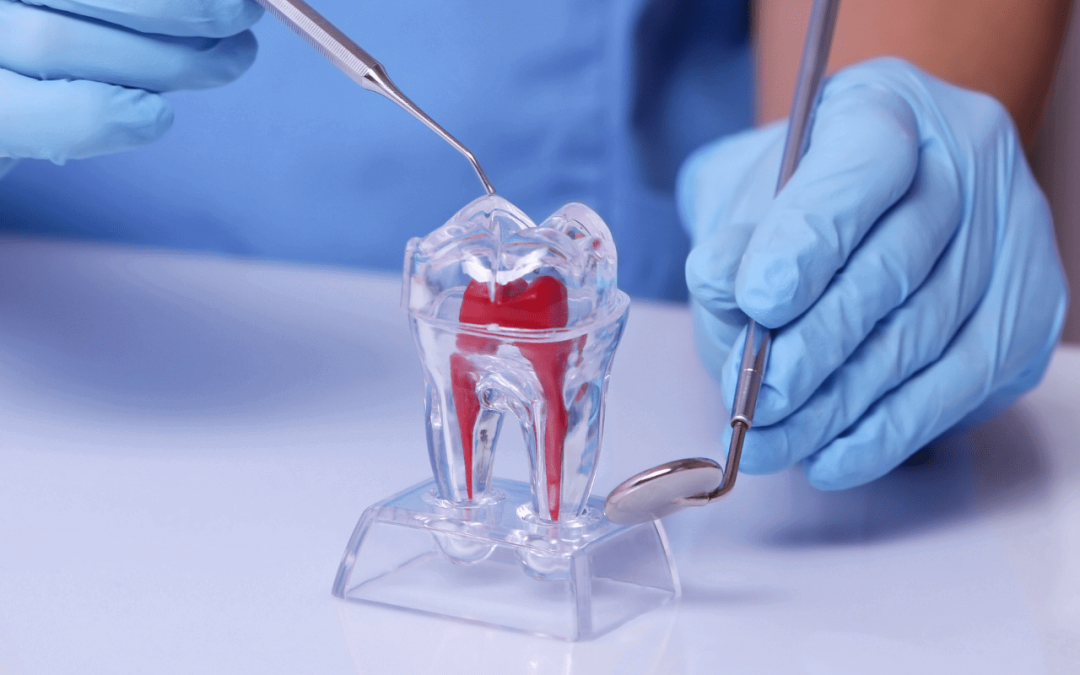Root canals are a common and effective procedure for relieving tooth pain and saving a tooth that is severely damaged or infected. Understanding when and why you might need a root canal can help ease concerns and ensure you receive appropriate treatment. Here’s a straightforward guide on what a root canal involves, the signs that indicate you might need one, the procedure itself, and what you should do after.
What Is a Root Canal?
A root canal, also known as endodontic therapy, addresses infections or damage inside a tooth. Here’s what happens during the procedure:
- Removing Infected Pulp: The dentist first removes the damaged pulp, which includes nerves and blood vessels.
- Disinfecting: Next, the dentist thoroughly cleans the empty canals to eliminate bacteria.
- Filling Canals: After cleaning, the dentist fills the canals with a biocompatible material to seal them and prevent new infections.
- Placing a Crown: Often, the dentist places a crown over the tooth to restore its strength and function.
Signs You Might Need a Root Canal
Several signs suggest that you might need a root canal. If you notice any of the following symptoms, it’s important to consult with your dentist:
- Severe Tooth Pain: Persistent pain, especially when chewing or applying pressure, is a common indicator.
- Sensitivity: Extended sensitivity to hot or cold that lingers even after the stimulus is removed could be a sign.
- Discoloration: A tooth that turns darker or changes color may indicate damage.
- Swelling: Swelling in the gums or face near the affected tooth, often accompanied by tenderness, is another sign.
- Tenderness: Tenderness or pain in the gums around a specific tooth might signal the need for a root canal.
The Root Canal Procedure Explained
Here’s a step-by-step look at what to expect during a root canal:
- Initial Exam: The dentist begins with X-rays and an examination to assess the extent of the damage.
- Local Anesthesia: To ensure comfort, the dentist administers a local anesthetic to numb the affected tooth and surrounding area.
- Access Opening: The dentist creates a small opening in the top of the tooth to access the pulp chamber and root canals.
- Cleaning and Shaping: Using specialized tools, the dentist removes the infected pulp and shapes the root canals.
- Filling: After cleaning, the dentist fills the canals with a biocompatible material, such as gutta-percha, to seal them.
- Restoration: Finally, the dentist places a temporary or permanent filling in the opening. In many cases, a crown is added to restore the tooth’s strength and function.
Post-Treatment Care and Recovery Tips
After a root canal, it’s essential to follow these care tips to ensure a smooth recovery:
- Avoid Hard Foods: Until the final crown is placed, steer clear of hard foods that might damage the tooth.
- Maintain Oral Hygiene: Continue brushing and flossing regularly to keep the area clean and prevent future issues.
- Watch for Symptoms: Stay alert for any new pain or swelling. If you notice any, contact your dentist promptly.
- Follow-Up Visits: Attend all scheduled follow-up appointments to monitor healing and check the effectiveness of the restoration.
In summary, a root canal is a crucial procedure for relieving pain and saving a damaged tooth. If you experience symptoms that suggest you might need a root canal, contact The Art of Dentistry VB today. Our team is ready to provide expert care and guide you through every step of the process.

